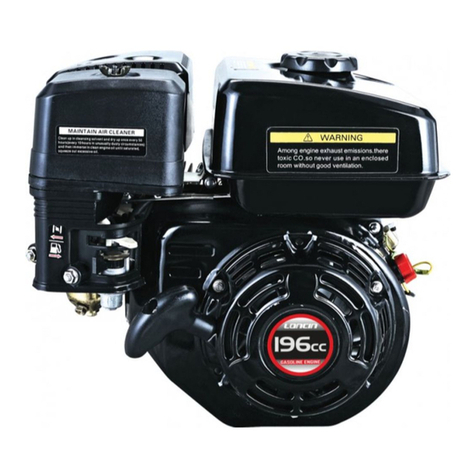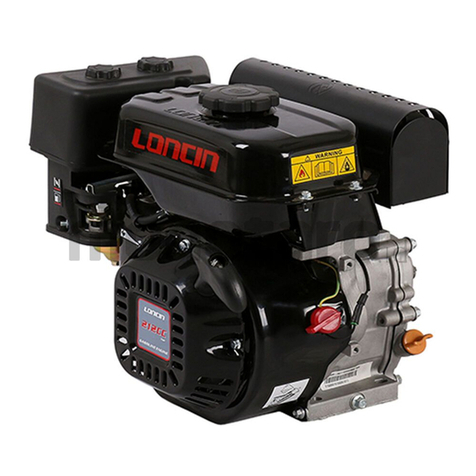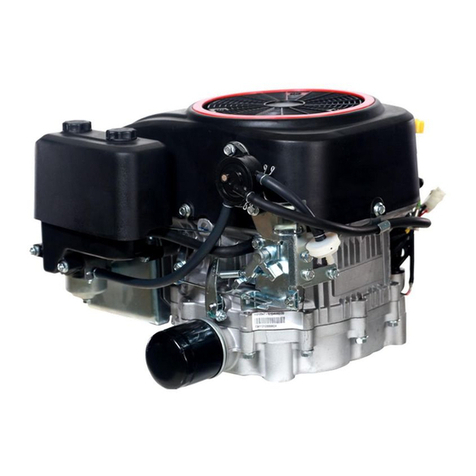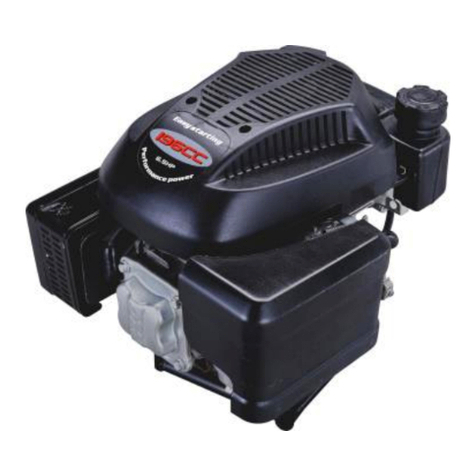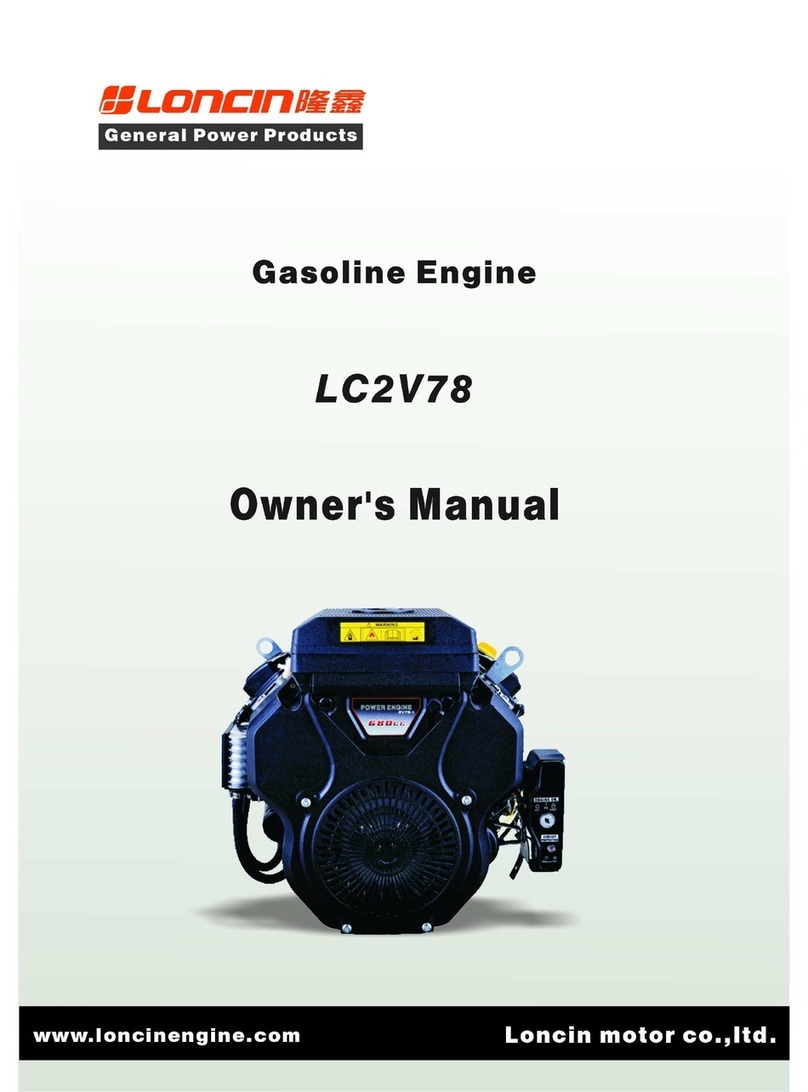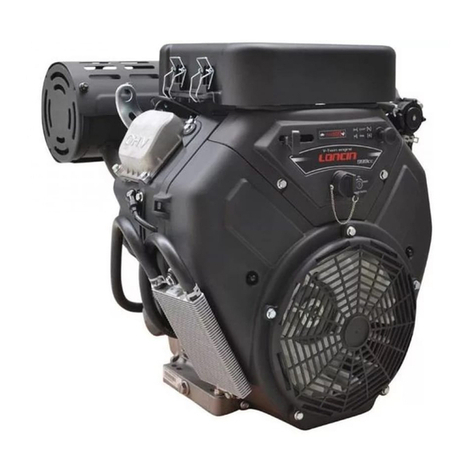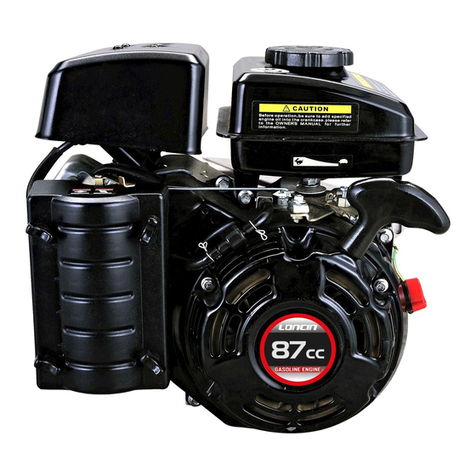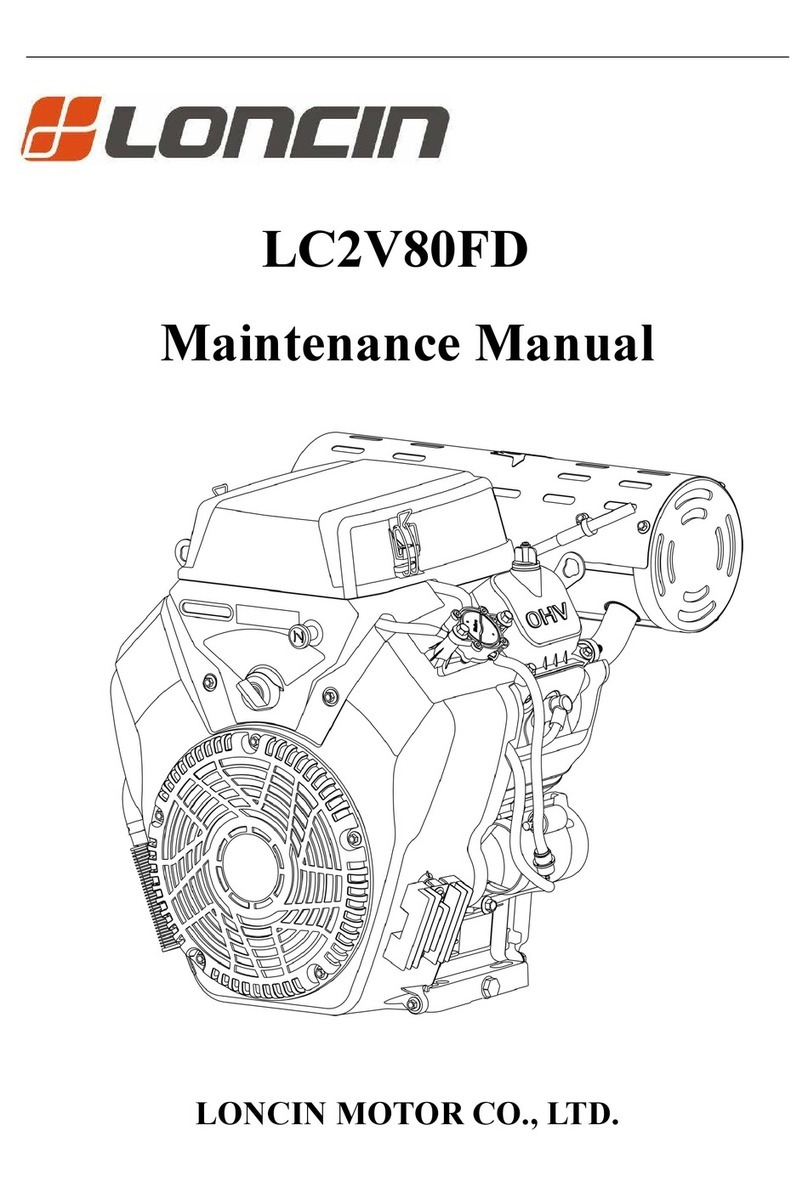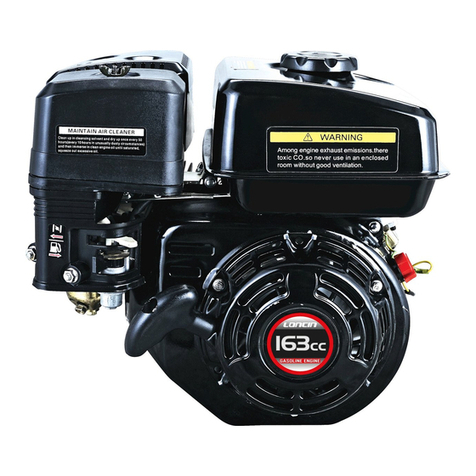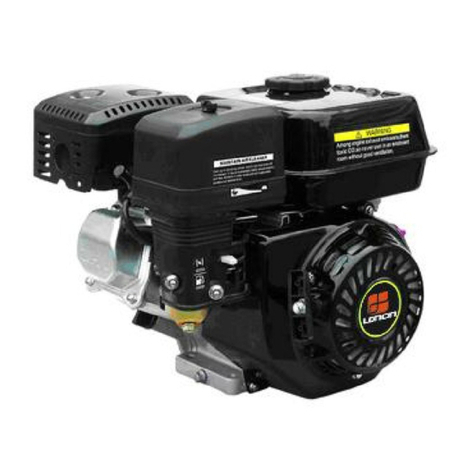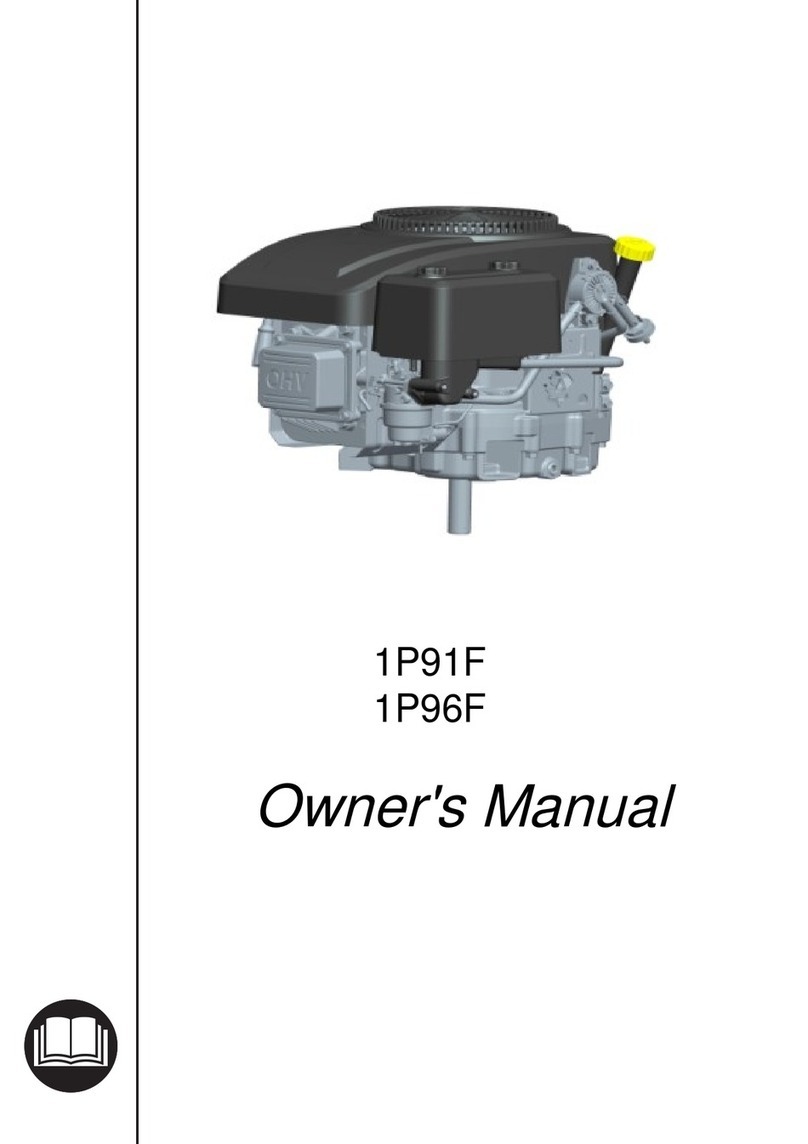
5
2. Specifications
Model LC178F(D) D350F(D) LC186F(D) D440F(D)
Type Single cylinder, vertical cylinder, 4stroke, forced cooling , direct
injection
Bore × Stroke (mm) Ø78x73 Ø86x76
Displacement(L)0.349 0.441
Compression ratio 21
Rated power
(kW/rpm)4.9/3600 6.8 /3600
PTO shaft rotation Anti-clockwise(from PTO side)
Fuel tank capacity
(L)3.7 4.7
Lube oil capacity(L)1.1 1.6
Starting system Recoilstart (LC178F LC186F)
Electric start+ Recoil start (LC178FD LC186FD)
Lubrication system Forced lubrication
Valve Clearance
(mm)
Input valve:0.10~0.15
Output valve:0.15~0.20
Fuel supply advance
angle (°)18±1
Battery capability 12V36Ah
Dimension 390×430×460 399×475×500
Net weight(kg)With electric start ≤44
Without electric start ≤39
With electric start ≤51
Without electric start ≤47
The power rating of the engine indicated in this document is the net power output tested on
a production engine for the engine model and measured in accordance with SAE J1349 at
3,600 rpm (Net Power).Mass production engines may vary from this value.
Actual power output for the engine installed in the final machine will vary depending on
numerous factors, including the operating speed of the engine in application, environmental
conditions, maintenance, and other variables.
